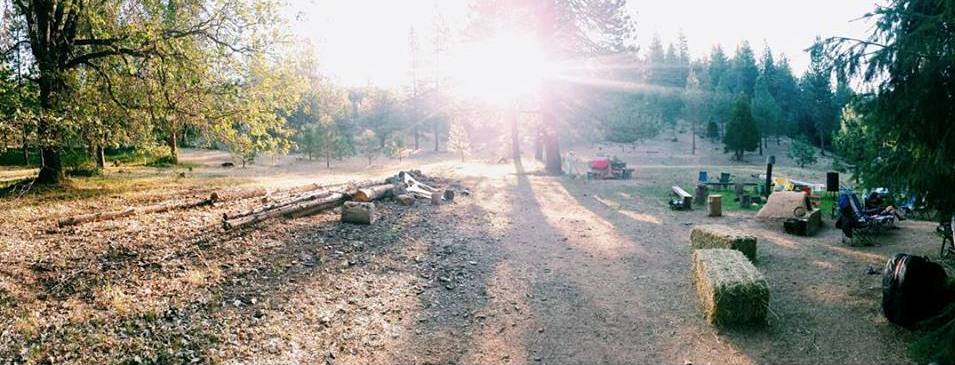hag (n). Early 13th century. “Ugly old woman,” probably a shortening of haegtesse “witch fury” from the proto-German. First element is probably a cognate of the Old English “haga,” or enclosure of a portion of the woodland, i.e. “hedge.”
In ancient England, vast tracts of the countryside were common property, open and accessible to all. The commons did not “belong” to anyone. Everyone in the community grazed their animals on the commons, mowed the meadows cooperatively and shared the harvest. The process of enclosing the commons began during the medieval period. For all intents and purposes, enclosure was a land grab. The wealthy and powerful claimed ownership of the commons, kicked everyone else off the newly private land and planted hedges to mark their boundaries.
It is no coincidence that the enclosure of the commons and the early European witch hunts started and accelerated at roughly the same time. The following is extracted from a Case Study of the European Witch-Hunts by Adam Hunt:
“Many scholars argue that women who were most independent from patriarchal norms - especially elderly ones living outside the parameters of the patriarchal family - were most vulnerable to accusations of witchcraft. 'The limited data we have regarding the age of witches ... shows a solid majority of witches were older than 50, which in the early modern period was considered to be a much more advanced age than today. 'The reason for this strong correlation seems clear: these women, particularly older women who had never given birth and now were beyond giving birth, comprised the female group most difficult to assimilate, to comprehend, within the regulative late medieval social matrix, organized, as it was, around the family unit.”
A childless widow lacking the protection of husband or family is declared a witch. Any property she had inherited from her husband, including unenclosed land, reverted to the local lord or the church. Powerful incentives, no?
The hag escaped burning by relinquishing her property, walking away from society and retreating to the forest. She made her home in, and foraged her living from, the ever-shrinking wild-lands. She learned how to build and how to hunt, which plants were edible, which medicinal. She might occasionally trade on her knowledge with civilians. She "straddled the hedge," thus "hag." But she lived her life beyond the boundaries of law, family, civilization. She was suspect. She was wild. She was dangerous.
Just as I crossed the boundary from maiden to mother, I’m now crossing the boundary from mother to crone. The word “crone” conveys a sense of dignity to my ear, but for some reason the hateful word “hag” feels much more apt. I don’t know why; maybe it’s the hair that grows out of the mole on my chin. How did “hag” acquire pejorative connotations such as “ugly” and “fury?" Why does a search of "hag" in Google Images return the hideous harridan pictured above (another aging, childless woman.) Maybe it is because the end of fertility marks the end of a woman's need for the patriarchal society's approval. The aging woman lays down the burden of physical beauty. She no longer hungers for the male gaze. She doesn't care as much about being seen, but, goddammit, she demands to be heard.
A childless widow lacking the protection of husband or family is declared a witch. Any property she had inherited from her husband, including unenclosed land, reverted to the local lord or the church. Powerful incentives, no?
The hag escaped burning by relinquishing her property, walking away from society and retreating to the forest. She made her home in, and foraged her living from, the ever-shrinking wild-lands. She learned how to build and how to hunt, which plants were edible, which medicinal. She might occasionally trade on her knowledge with civilians. She "straddled the hedge," thus "hag." But she lived her life beyond the boundaries of law, family, civilization. She was suspect. She was wild. She was dangerous.
Just as I crossed the boundary from maiden to mother, I’m now crossing the boundary from mother to crone. The word “crone” conveys a sense of dignity to my ear, but for some reason the hateful word “hag” feels much more apt. I don’t know why; maybe it’s the hair that grows out of the mole on my chin. How did “hag” acquire pejorative connotations such as “ugly” and “fury?" Why does a search of "hag" in Google Images return the hideous harridan pictured above (another aging, childless woman.) Maybe it is because the end of fertility marks the end of a woman's need for the patriarchal society's approval. The aging woman lays down the burden of physical beauty. She no longer hungers for the male gaze. She doesn't care as much about being seen, but, goddammit, she demands to be heard.
I don't need to apologize, explain or accommodate. I don't need to please. This hag is powerful. This hag is dangerous. This hag is a force to be reckoned with.

